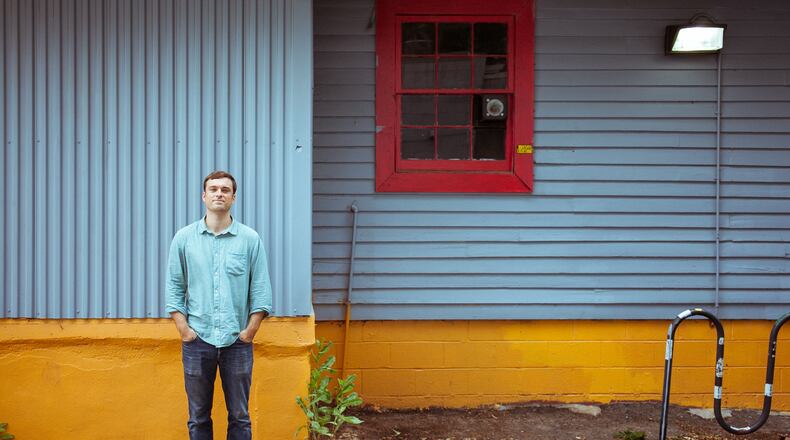Artists are storytellers, Chris Appleton says. Although he no longer practices his art, Appleton has quite a story to tell. He is co-founder and executive director of WonderRoot, an arts organization that he and two friends started in college 15 years ago with the lofty goal of improving Atlanta’s cultural and social landscape. At the ground level, WonderRoot offers artists studio space and is preparing to move from a 4,500 square foot building to a 54,000 square foot former school in Reynoldstown. WonderRoot also partners with community groups, nonprofits and local governments to incorporate the arts in their work. “The arts have the power to heal and bring people together,” Appleton says. “That is needed now as much as any other time in my life.”
Q: Where does the name “WonderRoot” come from?
A: When we were getting started, we really believed in this notion that change happens at tension points. The name WonderRoot embodies this tension of having big dreams and aspirations and goals while being rooted and grounded in the work that has to be done.
Q: You define art with a big A?
A: Painting, photography, ceramics, sculpture, music, literary arts, film, dance, theater, all of the above. WonderRoot very much wants to embrace any and all people interested in a creative pursuit.
Q: What’s an example of a community partnership you’ve been involved with?
A: We have been working with MARTA to enhance the ridership experience by providing public art at stations as well as helping engage residents who live around stations. When MARTA is visioning for the redevelopment of stations and the land around them, it wants to increase the public's input. The King Memorial station in Grant Park is an example of a project we wrapped up this past summer. People will see a massive mural reflecting a year of conversation about the issues and hopes that residents have for themselves and their community.
Q: Characterize Atlanta as an arts town?
A: Aspirational. Atlanta has a very, very rich past and present artistic community. Atlanta is challenged in the public funding for the arts.
Q: Why do you think WonderRoot caught on?
A: The amazing volunteers, artists, staff, board members and donors who jumped on board and helped craft the vision and carry it forward. At the time we were getting off the ground, people were really hungry for change in their communities, as they are today.
Q: How do you think WonderRoot has changed Atlanta?
A: Perhaps that is for someone else to say. I can say how I hope it has changed or contributed to Atlanta's growth. When we were getting started, Atlanta was the place that artists and activists and young people left to go to New York, Chicago, Los Angeles, the Bay Area. In 2017, Atlanta is a place where not only do our native artists stay, but it attracts artists from all over the country and the world. I think WonderRoot, along with a great number of other organizations, has contributed to an improved ecosystem for artists to build and sustain careers in Atlanta. The other way I hope WonderRoot has contributed to Atlanta's evolution is by increasing the engagement between artists and underserved communities.
Q: What is WonderRoot’s biggest accomplishment?
A: We have provided an inclusive, affordable, safe space for artists, students, activists and families to come together and envision and activate ways that the arts are a part of making Atlanta a more thriving, equitable place for all people. The new facility will be a larger, more expansive version of what we have been doing.
Q: Are you an artist?
A: There was a time I was actively and aspirationally creating work, primarily as a fiction writer and poet. As WonderRoot has taken over my life, in a very good way, I have learned that what I have to contribute to the world is facilitating relationships between artists and community members.
For more on WonderRoot: www.wonderroot.org.
About the Author
The Latest
Featured


